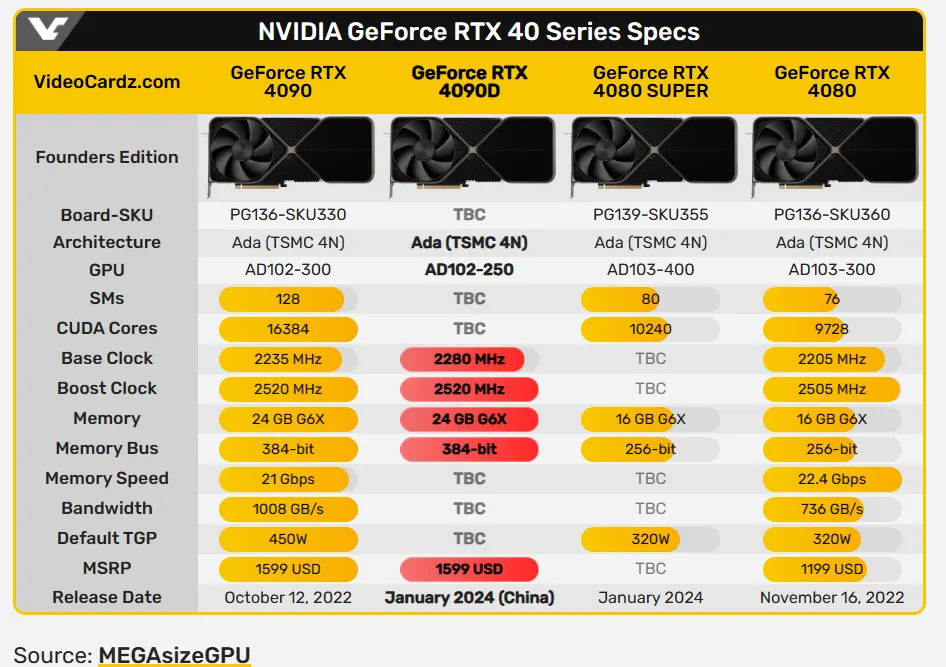
In a strategic market move, Nvidia has unveiled the RTX 4090D, a slightly less powerful version of its high-performance RTX 4090 GPU, especially for the Chinese market. The move is a direct response to U.S. government efforts to hurt China’s technology market by restricting exports of high-tech goods and services from U.S. suppliers amid heightened geopolitical tensions.
What’s the point of the new regulations? A desire to thwart China’s efforts to gain an edge in artificial intelligence technology.
The recently unveiled RTX 4090D features 14,592 CUDA processing cores compared to 16,384 in the standard RTX 4090. It also has slightly lower power consumption, at 425W instead of 450W. As a result, the 4090D performs about 5% less than the original, but still complies with the 4,800 TOPS (trillion operations per second) speed limit set by the United States, which is the fastest speed achievable by American hardware. china.
Additionally, the new GPUs don’t support overclocking, so there’s no way to tweak them to make them more powerful (at least on paper).

The launch of the 4090D comes after the United States added the flagship RTX 4090 gaming GPU to its export ban list to China in October.
“The GeForce RTX 4090D is designed to be fully compliant with U.S. government export controls,” an Nvidia spokesperson said in an email. The VergeNvidia noted that it “collaborated extensively with the U.S. government” during development.
The United States has become increasingly strict in banning exports of advanced AI accelerators and other high-performance chips to China. Commerce Secretary Gina Raimondo recently spoke out against attempts to circumvent these sanctions, saying at the Reagan Defense Forum that “if they redesign the chip around a certain cutoff line that enables AI, I will control that.” Manufacturers have been warned. next day.”
The warning appears to be aimed at Nvidia’s efforts to develop compatible chips after its existing products were banned. For example, when the United States banned exports of Nvidia’s H100 and A100 AI accelerators last August, the company launched the A800 for China in November, essentially the same chip as the A100 but with reduced interconnect bandwidth.
“I know there were CEOs of chip companies who were a little annoyed with me when I did that because you’re losing revenue,” Raimondo said. “Life is what it is. Protecting our national security is more important than short-term profits.”
The launch of the RTX 4090D represents Nvidia’s latest attempt to comply with US sanctions while continuing to serve customers in China, one of its key markets. With its reduced tensor cores and lower power consumption, the 4090D appears to have been carefully built to not cross the U.S. government’s red line on supporting China’s advanced AI development, but is still capable of performing well in games and AI training when properly configured. Powerful. .
Chinese companies have been preparing to face US sanctions. Some of China’s most important tech giants, such as Baidu, ByteDance, Tencent, and Alibaba, invested up to $5 billion in Nvidia hardware shortly before Raimondo’s actions occurred. This is a similar movement among small and medium-sized businesses.
However, as Secretary Raimondo’s warning indicates, the United States will likely continue to monitor and restrict Nvidia products that could potentially enable AI acceleration. Despite this subtle move toward exporting emerging technologies between the two superpowers, enthusiasts can at least run PC games at maximum configuration.
Edited by Ryan Ozawa.



